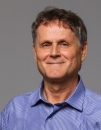Control of Power Converters
Data is displayed for academic year: 2023./2024.
Course Description
Power converter control system structure. Static and dynamic models of power converters. Need for dynamic models. Development of dynamic models using averaging method; switching function averaging, power switch averaging. State-space models: continuous-time and discrete-time. Generalized state-space models. Linear and piecewise linear models; linearization of continuous-time and discrete-time models. Model analisys, transfer function. Control design examples; DCDC converter, renewable energy power converter system.
Study Programmes
University graduate
[FER3-HR] Audio Technologies and Electroacoustics - profile
Elective Courses
(2. semester)
[FER3-HR] Communication and Space Technologies - profile
Elective Courses
(2. semester)
[FER3-HR] Computational Modelling in Engineering - profile
Elective Courses
(2. semester)
[FER3-HR] Computer Engineering - profile
Elective Courses
(2. semester)
[FER3-HR] Computer Science - profile
Elective Courses
(2. semester)
[FER3-HR] Control Systems and Robotics - profile
Elective Courses
(2. semester)
Elective Courses of the Profile
(2. semester)
[FER3-HR] Data Science - profile
Elective Courses
(2. semester)
[FER3-HR] Electrical Power Engineering - profile
Elective Courses
(2. semester)
[FER3-HR] Electric Machines, Drives and Automation - profile
Elective Courses
(2. semester)
Elective Courses of the Profile
(2. semester)
[FER3-HR] Electronic and Computer Engineering - profile
Elective Courses
(2. semester)
[FER3-HR] Electronics - profile
Elective Courses
(2. semester)
[FER3-HR] Information and Communication Engineering - profile
Elective Courses
(2. semester)
[FER3-HR] Network Science - profile
Elective Courses
(2. semester)
[FER3-HR] Software Engineering and Information Systems - profile
Elective Courses
(2. semester)
Learning Outcomes
- define power converter control system structure
- explain static and dynamic power converter models development procedure
- explain voltage and current mode control of power converters
- analyze averaging and linearization of power switch and power converter
- analyze power converters state-space models
- apply power converter averaged and state-space models in feedback control system analisys
- summarize the acquired knowledge in the work with power converter laboratoy model
Forms of Teaching
Lectures
Lectures are interactive with the application of modern methods and aids.
Seminars and workshopsStudents' seminar work envisages independent work on topics covered in lectures and laboratory exercises.
LaboratoryLaboratory exercises are a combination of simulation exercises and exercises on physical models in the laboratory.
Grading Method
| Continuous Assessment | Exam | |||||
|---|---|---|---|---|---|---|
| Type | Threshold | Percent of Grade | Threshold | Percent of Grade | ||
| Laboratory Exercises | 50 % | 25 % | 50 % | 25 % | ||
| Seminar/Project | 50 % | 25 % | 0 % | 0 % | ||
| Mid Term Exam: Written | 50 % | 20 % | 50 % | |||
| Final Exam: Written | 50 % | 20 % | ||||
| Final Exam: Oral | 10 % | |||||
| Exam: Written | 50 % | 50 % | ||||
| Exam: Oral | 25 % | |||||
Week by Week Schedule
- Static and dynamic converter models
- Converter dynamic models derived from current-loop averaging
- Switch element averaging and switching function instantaneous average value, DC component averaging, Fundamental harmonic averaging, Continuous- and discontinuous-current converter averaged models
- Continuous- and discontinuous-current converter linearized averaged models, Averaged switching element linearization
- State space converter models, Continuous-time models, State space converter models averaging, Generalized state space models
- Generalized models of certain converters examples, Linear and interval linear models, Continuous-time converter state space models linearization, Continuous-time converter state space models analysis
- Discrete-time or sampled converter models, Discrete-time converter models linearization, Discrete-time converter linear models analysis
- Midterm exam
- Power converter control system design; Power converter transfer function; Steady state and time response, Converter current control system; Compensation ramp, Advanced current power converter control methods
- Voltage mode control; Power converter cascade control, Elimination of subharmonic oscillations in current mode control, Modelling and control of the DC-DC power converter connected to the batteries or micro grid
- DC motor speed control system, DC-DC converter selection, Filter design and filter components selection, DC-DC converter transfer function, Controller selection and parameter calculation, Converter control
- Induction machine speed control system, Three-phase inverter switching states, Three-phase systems voltage vector in a three-phase stationary coordinate system, Switching schemes, Reduced THD switching schemes, Reduced switching losses switching schemes
- AC-grid energy transfer systems, Grid filter design, passive resonance dampening, Grid synchronization algorithms, Current control of grid-tied inverter in dq frame
- Contol of active and reactive power, Control of DC link voltage, Low voltage ride-trough, unsymetrical voltage operation, Active harmonic filtering and active filter dampening
- Final exam
Literature
ohn G. Kassakian, Martin F. Schlecht, George C. Verghese (2008.), Osnove učinske elektronike, II. dio - Dinamika i upravljanje (prijevod), Graphis
For students
General
ID 223703
Summer semester
5 ECTS
L1 English Level
L1 e-Learning
30 Lectures
0 Seminar
0 Exercises
13 Laboratory exercises
0 Project laboratory
0 Physical education excercises
Grading System
87 Excellent
75 Very Good
62 Good
50 Sufficient


 Pristupačnost
Pristupačnost

